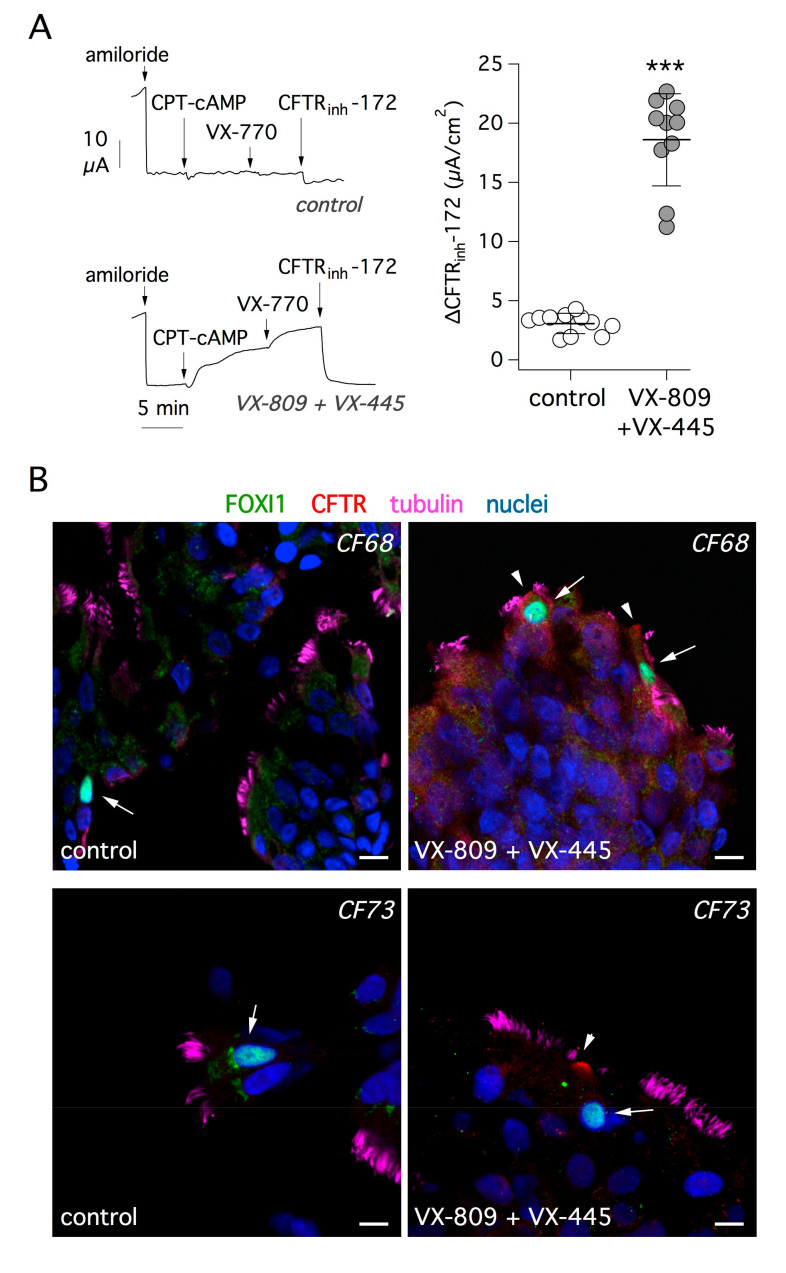Figure 5.
Rescue of F508del-CFTR function and trafficking by a combination of correctors. (A) Representative short-circuit current recordings (left) and summary of results (right) from experiments on CF bronchial epithelial cells (F508del/F508del genotype). Cells were treated for 24 h with vehicle alone or with a combination of correctors: VX-809 (1 µM) plus VX-445 (5 µM). During experiments, the epithelial Na+ channel (ENaC) was blocked with amiloride (10 µM). CFTR-dependent Cl− secretion was then stimulated with 8-(4-chlorophenylthio)adenosine 3′,5′-cyclic monophosphate (CPT-cAMP, 100 µM) and the potentiator VX-770 (1 µM). Finally, CFTR activity was inhibited with CFTRinh-172 (10 µM). The scatter dot plot on the right reports the amplitude of CFTRinh-172 effect, which reflects the extent of CFTR function. The results demonstrate significant (***, p < 0.001) rescue of F508del-CFTR by the combination of correctors. (B) Analysis of F508del-CFTR protein rescue by immunofluorescence. The figure shows representative immunofluorescence images of cultured bronchial epithelial cells from two CF patients (CF68 and CF73). Cells were treated with vehicle (control, left) or with VX-809 plus VX-445 (right) and then stained for FOXI1 (arrows), CFTR, tubulin (cilia), and nuclei. The treatment with correctors led to the appearance of CFTR signal in the apical membrane (arrowheads). Scale bar: 10 µm.

